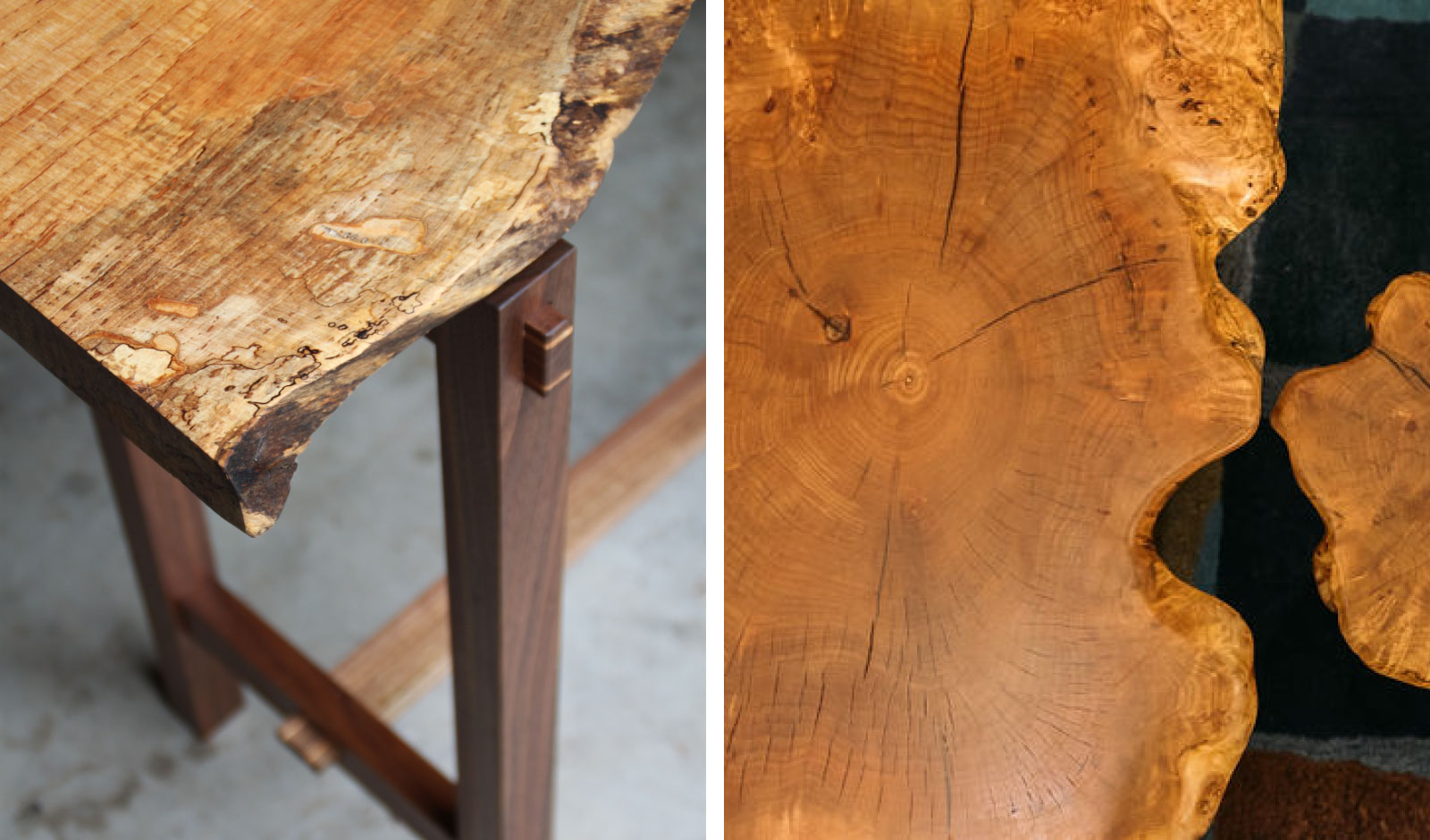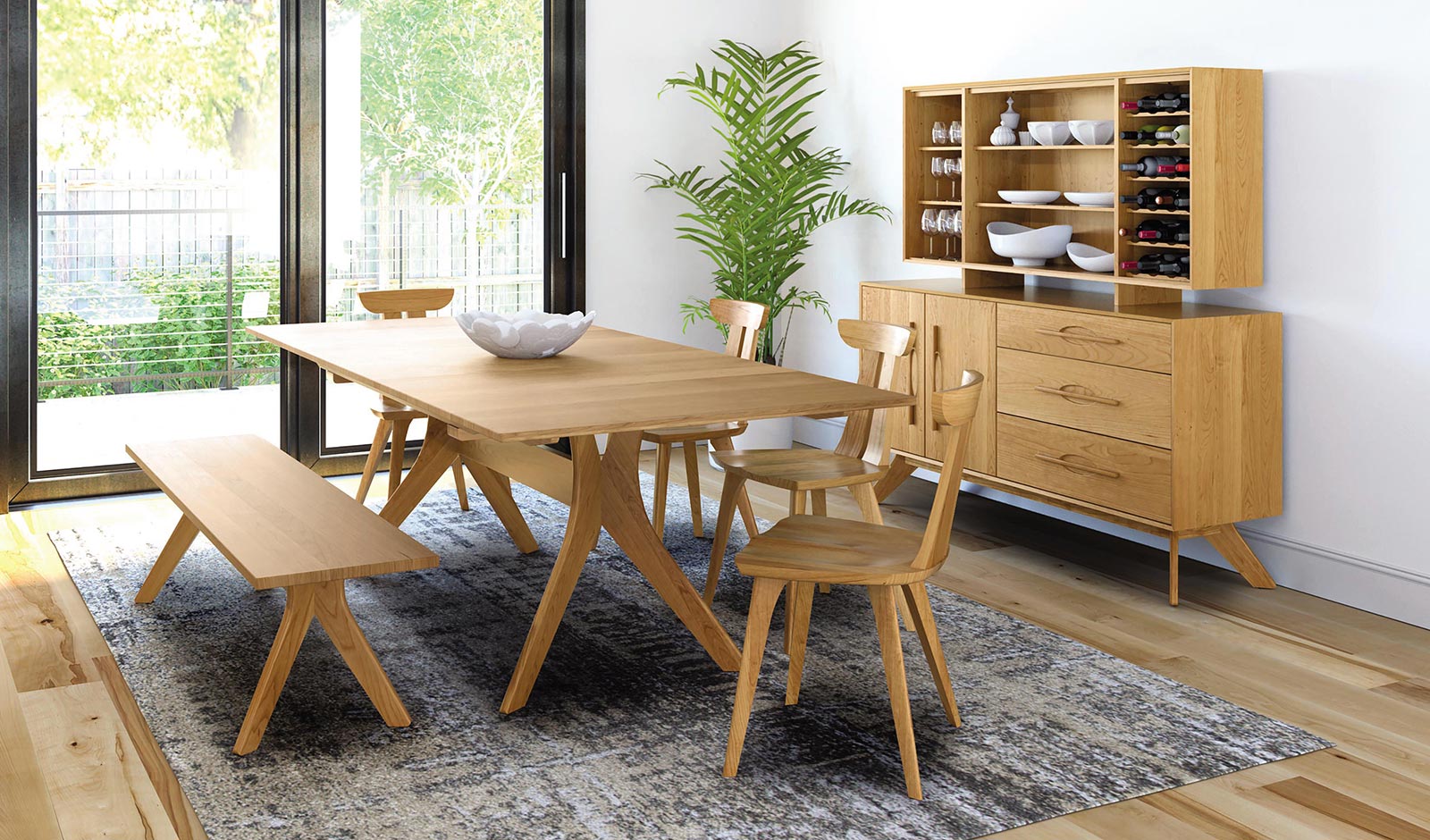Hello and welcome to the Fairhaven Furniture blog! We’ll use this space to share news and inspiration about products, materials, interior design, our extended family of makers… really any furniture-related subject that tickles our fancy. We post every few weeks, so check back often, or subscribe to our e-news to be notified of new posts.
We’re kicking things off with a post on one of our favorite topics: wood. As you might expect, we’re completely, totally, head-over-heels obsessed with wood – we started out as a woodworking shop, after all! But in talking with our customers over the years, we’ve discovered that folks have a lot of misconceptions about this beautiful, natural material. There’s nothing we love better than sharing knowledge about our top-choice furniture material, so let’s dig in and demystify wood!
Understanding Wood’s Characteristics
Wood is a natural material, and every piece is unique. Variations in color and grain are normal and expected – even among pieces of wood that come from the same tree. (Lighter pieces were closer to the tree’s bark, while darker ones were closer to the center.) Similarly, pitch pockets, knots, and mineral deposits are not flaws, but signs of an authentic material.
Knots, wood grain, and color variations react differently to finishes and will remain visible in completed furniture. They have no effect on the durability or structural integrity of a piece. When you choose solid wood furniture for your home, you should be prepared to see these natural markings and embrace the way that they make your piece truly one-of-a-kind.

Wood and Its Environment
Wood is an incredibly sturdy and durable material, but it’s also sensitive its environment in ways that some other materials are not. When you live with wood furniture, it’s important to be conscious of the environmental factors that will affect it.
Humidity
Wood is happiest in moderate conditions of around 68 to 72 degrees and 50-55% humidity. As the relative humidity in your home changes, the moisture content in your wood furniture changes along with it, causing the wood to expand and contract. Excessive heat and dryness, or sudden changes in temperature and humidity, can cause wood to split and crack.
Sunlight
The sun’s ultraviolet rays affect the color of wood. Some woods, like cherry, will gradually deepen in color with exposure to UV light. Others, like walnut, will lighten. This is completely natural – the maturing of wood is a beautiful process that lends character to a piece. But prolonged exposure to direct sunlight can bleach the wood and damage furniture’s finish, sometimes even causing it to crack in a pattern like alligator skin.
Chemicals
The finish on solid wood furniture is easily damaged by chemicals like ammonia, nail polish remover, paint thinner, and alcohol. (Don’t forget that many common household products contain alcohol – like perfumes and liquid medications, as well as beverages like beer and wine.) When plastic objects are left a long time on wood furniture, they can stick to the finish and damage it. Also, color from the plastics in placemats, wrappers, or toys can leach into wood over time. Plants and flower nectar can cause permanent stains, as well as perspiration and oils from your skin.
Heat and Moisture
Placing hot items on furniture can trigger a chemical change in the finish, resulting in white rings or spots, while water can cause swelling, warping, or staining when it penetrates a finish.

Living with Wood Furniture
This might sound like a lot to worry about, but trust us – a few small precautions will protect your furniture and help it to last a lifetime.
When you can, minimize your furniture’s exposure to humidity swings by placing it away from heat sources like radiators, air ducts, or fireplaces. Consider using a humidifier in the winter and an air conditioner in the summer to maintain a more even level of humidity in your home. In a damp room, think about adding a dehumidifier.
Avoid storing your wood furniture in spaces without climate control – like attics, basements, garages, or warehouses. And for extension tables, store extra leaves as close as possible to the table, so they are exposed to the same conditions and mature in the same way.
Try to place furniture out of direct sunlight, or use curtains or shades to screen your furniture during times of day when bright sun streams in. Expose furniture to light uniformly, so that natural color changes will occur evenly. Try not to let the sun hit only part of the surface, and move your lamps and decorative objects around from time to time.
Treat your furniture gently. Don’t overstuff drawers. If a drawer has two handles, use both open it. And when moving furniture, lift it with the help of another person – sliding pieces can apply too much sideways pressure and damage the legs.
When placing hot dishes or mugs on wood furniture, always protect it with a trivet first. Use a mat or a coaster with glasses to keep moisture off the wood.
And finally, keep it clean! Wipe up spills promptly, and always include your wood furniture in your regular cleaning routine.
Cleaning hardwood furniture is a whole separate topic, and we have a lot of thoughts about it! We’ll save those for a future post. Subscribe to our e-news to be notified when new posts are live – there’s a sign up form in the footer of this page. Thanks for reading!
